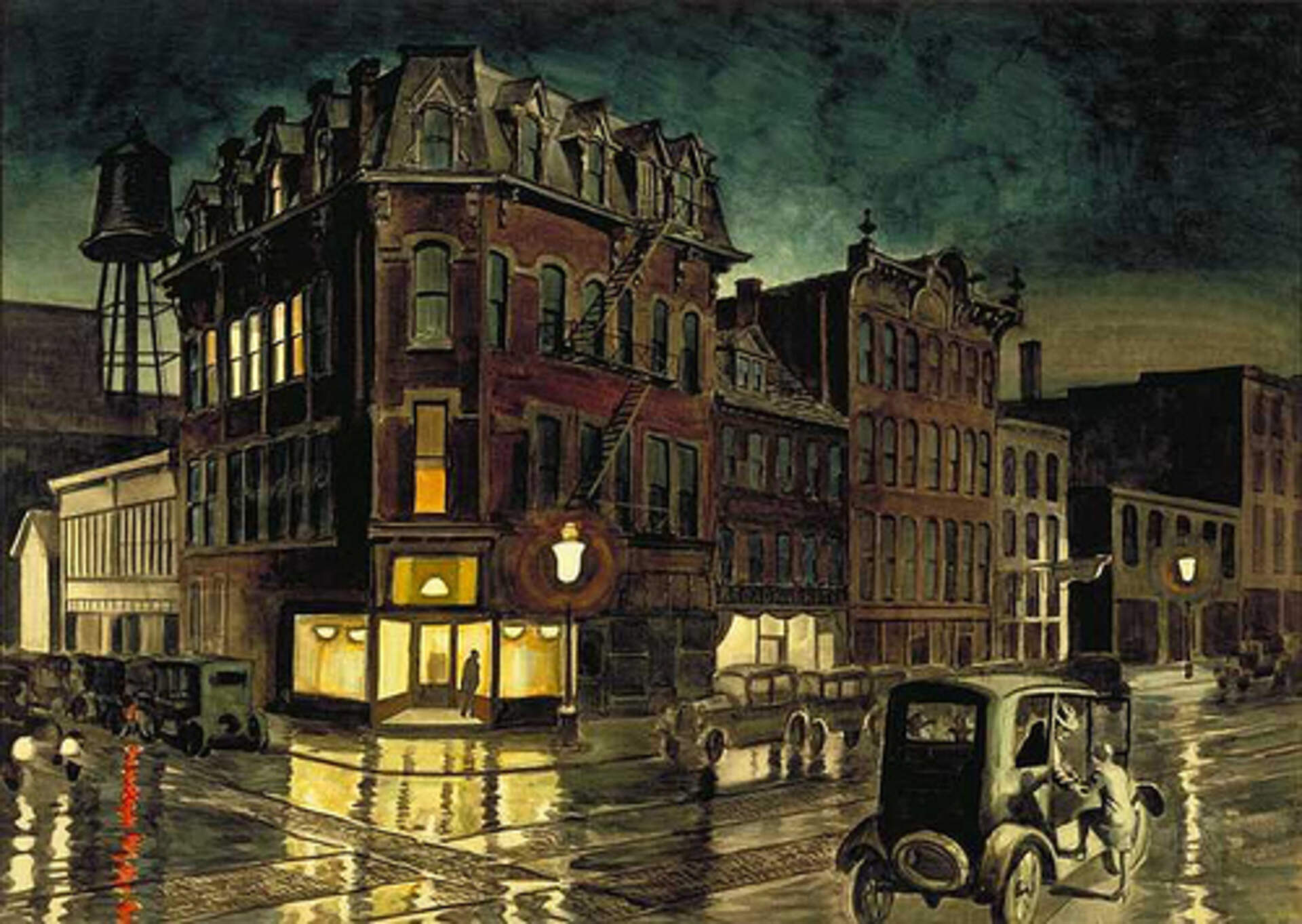
Charles E. Burchfield (1893-1967), Rainy Night, 1929-1930; Watercolor over graphite, 30 x 42 inches; The San Diego Museum of Art, Gift of Anne R. and Amy Putnam, 1939:97
Casting Light on Charles Burchfield's Rainy Night by Philip Koch
Tuesday, Jan 19, 2016
Read the complete illustrated essay at http://philipkochpaintings.blogspot.com/2016/01/casting-light-on-charles-burchfields.html
One of the best things about my serving as the Artist In Residence at the Burchfield Penney Art Center for this year is the opportunity to go and paint from some of the same areas Charles Burchfield used for his sources. I was up in Buffalo for the Residency last week.
I went to downtown Buffalo and worked from a building that inspired one of his best known paintings, Rainy Night, below. Burchfield's painting to me is deliciously evocative of the moodiness of the city at night. I did several drawings of the building, beginning by making a drawing of it sheltered from the January winds in the Public Library directly across the street.
Overall I did six drawing, including my pastel of the building's elaborate mansard roof in yellows at the beginning of this post and this one below in cooler violets. I probably will be turning a least a couple of them into larger oil paintings.
The pastels were based on this charcoal.
And it in turn was done from this drawing of the entire structure.
What inspired my turn to working from an urban subject was that Tullis Johnson, one of Burchfield Penney Curators and the Manger of its Archives, showed me a box full of the preparatory studies Burchfield made to help him conceive of the composition for Rainy Night. I was hooked. Tullis told me where I could find the building Burchfield had worked from and off I went.
While at the Archives I photographed the following eight of Burchfield's preparatory studies.
Burchfield would go to remarkable lengths to amass information about the details of the scene. Yet in the end what I find most intriguing about his watercolor is how he orchestrates all the details into an overall whole. He's masterfully selective in picking out only a few of his details to become focal points in his composition. I wonder if this came out of his experiments on the watercolor itself as he slowly worked it towards its completion or whether he had made additional studies of the overall composition that I didn't see.